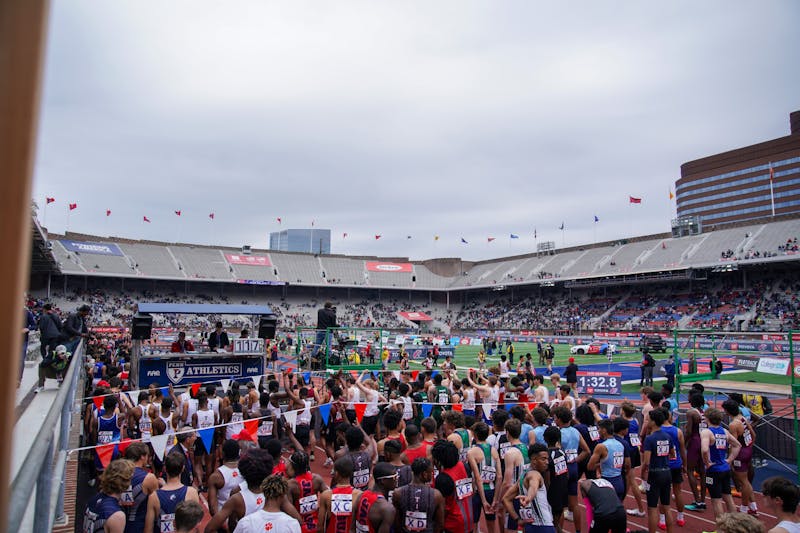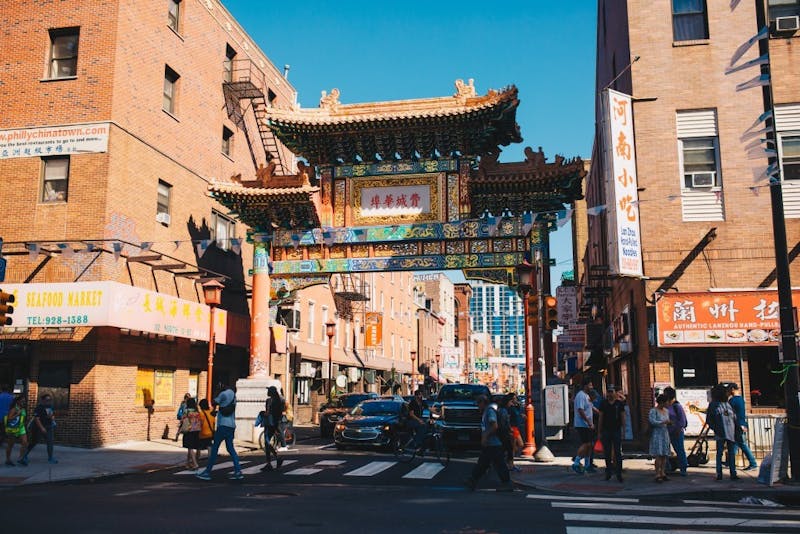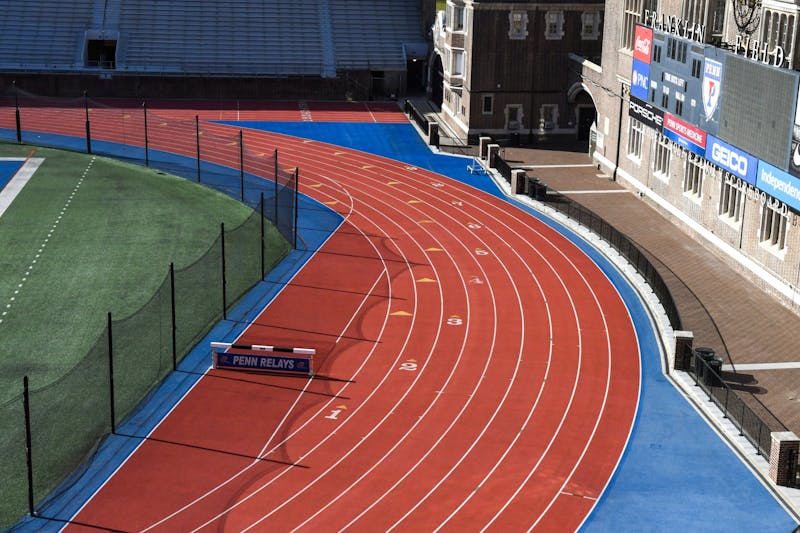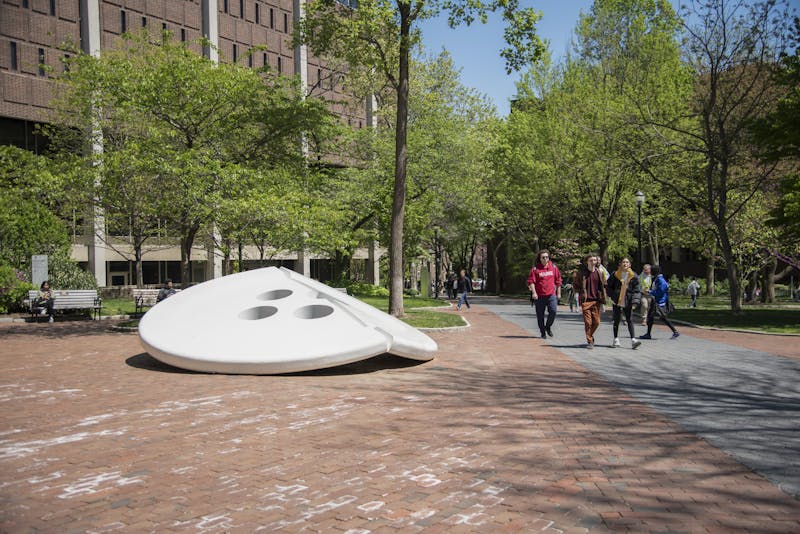
Spectators at Franklin Field during Penn Relays on April 29, 2023.
Credit: Nathaniel BabittsThe Penn Relay Carnival is the University’s single biggest event of the year.
The first Penn Relay Carnival — held on April 21, 1895 — boasted an attendance of 5,000 spectators and nine relay races, each featuring just two teams. Since then, that number has ballooned, with Franklin Field typically welcoming over 100,000 spectators and around 15,000 athletes competing in over 800 events across the three-day affair.
This year should be no different. So where does the money to hold such an extravagant event come from?
To answer this question, The Daily Pennsylvanian sat down with former Penn Relays Director Dave Johnson. Johnson served in the role from 1995 to 2021, making him the longest-tenured director of the Penn Relays in the Carnival’s 128-year history and the only director who has seen how the event has grown with technology-driven modernization.
Traditionally, donations played a large role in the money that helped fund the Relays. These contributions typically came from alumni and supporters of the Carnival and peaked in the early 1990s. As the 21st century approached, this faucet of income dried up — its place overtaken by sponsorships.
Sponsorships first made an appearance at the Penn Relays in 1988 and have become a mainstay since. The 2024 Penn Relays will feature 25 different sponsors with the three largest sponsors — Chick-fil-A, On, and Toyota — each getting a day of the Carnival named after themselves. The popularity of the Penn Relays has made it an enticing opportunity for companies to market themselves.
“The ability for Toyota to partner with Penn is really a significant thing for both of us,” Tri-State Toyota Dealers Association Secretary Bob McCormick said. “It just makes sense for [Penn] and makes sense for us. And we couldn't be happier to be part of this because we think it's such an iconic event.”
Another avenue of income for the Penn Relays is the entry fee. In order to compete, individual athletes must pay $25 while relay teams pay $50. At the time of writing, 1,947 individual athletes and 3,365 relay teams are currently set to compete in this year’s events. From entry fees alone, the Carnival is estimated to generate approximately $216,900 in revenue.
While this may seem like a lot, the amount pales in comparison to the event’s biggest source of money: ticket sales.
The Penn Relays employ a tiered ticketing system. During the first two days, the pricing is scaled across three different levels: tier one seats are the sections directly on either side of the finish line section, while tier two seats are the rest of the lower bowl section on the same side as the finish line.
On the third day of the Carnival, a fourth tier is added, comprising all seating in the upper bowl. The creation of this fourth tier corresponds with the increased amount of spectators in attendance for the final day of the event. On Saturday, upwards of 50,000 people pack Franklin Field to watch the Olympic Development events that feature many former Olympians and world champions.
If all attendees purchased the cheapest ticket price, the Penn Relays would generate $2.6 million from ticket sales. In actuality, the true amount garnered from ticket sales will be much higher than this estimated amount.
The Penn Relays have also seen mostly increasing attendance over the years, though crowds have historically been conditional on weather and the size of Franklin Field, as it was expanded over the years.
According to Johnson, the first time turnstile attendance was recorded by the Carnival was in 1958. To estimate attendance figures before then, he consulted various newspapers — specifically non-local papers like The New York Times to ensure that figures weren’t being blown up for the sake of reputation — to find attendance figures for given days.
“Before 1958, I had consulted various newspapers, wherever I could find an attendance figure for a given day,” Johnson said. “I generally went with The New York Times as an out of town newspaper that was here regularly and wasn’t as, say, influenced as a hometown paper that wanted to make [the Penn Relays] look good.”
The numbers he reported are summarized in the graph below.
In 1922, Franklin Field was rebuilt into a larger facility that drew much larger crowds: In the year before the construction, attendance was 16,000, and in the year after, a crowd of nearly 35,000 almost filled the newly built lower deck. When the upper deck was constructed in 1929, attendance jumped to 50,000 the following year.
After 1929, no major changes were made to the stadium, but attendance still fluctuated year-to-year based on weather and which athletes were in attendance. The first time the event hit 45,000 attendees was in 1929 when Paavo Nurmi, a decorated Finnish runner, came to Penn.
Weather – mostly rain – drove down attendance in early years, but in the early 2000s, when the Carnival started selling tickets by mail and through pre-orders instead of walk-ups, rainy weather actually encouraged early ticket sales as attendees wanted to make sure they had seats under the cover of the stadium.
After recent struggles with filling Franklin Field during the football season, the extravaganza will be a much-welcomed change of pace for one of the Ivy League’s best stadiums.
The Daily Pennsylvanian is an independent, student-run newspaper. Please consider making a donation to support the coverage that shapes the University. Your generosity ensures a future of strong journalism at Penn.
Donate








